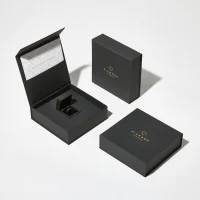White Gold Wedding Bands: A Comprehensive Guide to Choosing the Right Metal
The symbol of your love deserves a material that reflects its strength and enduring beauty. White gold wedding bands have become a popular choice for couples seeking a timeless and elegant aesthetic. But with so many factors to consider, choosing the right white gold band can feel overwhelming. This comprehensive guide will equip you with all the knowledge you need to find the perfect white gold wedding band for your special day.
Understanding White Gold
White gold itself isn't a naturally occurring metal. It's a beautiful alloy created by mixing pure yellow gold with other white metals like nickel, palladium, or silver. This blend achieves a stunning silver-white color that complements diamonds and other gemstones exceptionally well. The percentage of gold in the alloy is measured in karats (k). Common karat weights for white gold wedding bands are 14k and 18k, indicating 58.5% and 75% gold content, respectively.
Why Choose White Gold Wedding Bands?
- Classic Elegance: White gold offers a sophisticated and modern look that complements various styles, from minimalist to intricate.
- Durability: While not quite as strong as platinum, white gold is a relatively durable metal that can withstand everyday wear and tear.
- Affordability: Compared to platinum, white gold is generally more affordable, making it a budget-friendly option for many couples.
- Hypoallergenic (with reservations): White gold with palladium or silver is often a good choice for those with nickel allergies. However, some people may still experience sensitivity, so a skin test is recommended if allergies are a concern.
- Versatility: White gold pairs beautifully with a wide range of gemstones, from sparkling diamonds to colorful sapphires and emeralds.
Things to Consider When Choosing a White Gold Wedding Band
- Karat Weight: Higher karat weights (18k) offer a richer gold content and a slightly warmer hue. Lower karat weights (14k) are more affordable and slightly more durable due to the presence of a higher percentage of strengthening alloys.
- Finish: White gold wedding bands come in various finishes, like high-polish for a classic shine or brushed for a more modern, matte look.
- Style: Consider your personal style and the style of your engagement ring (if applicable). White gold bands come in a variety of widths, from delicate and thin to bold and statement-making. Popular styles include plain bands, milgrain (a vintage-inspired detail with tiny beaded edges), and bands with intricate engravings or gemstones.
- Rhodium Plating: White gold naturally develops a slight yellowish tinge over time. To maintain its bright white color, most white gold bands are rhodium plated. Rhodium plating is a thin layer of a white metal that adds brilliance and protects the white gold underneath. However, rhodium plating can wear off over time and requires replating every few years.
Caring for Your White Gold Wedding Band
- Regularly clean your white gold band with a mild soap solution and a soft cloth.
- Avoid harsh chemicals and abrasives that can damage the metal or the rhodium plating.
- Have your ring professionally inspected and re-plated (if necessary) every few years.
By following this comprehensive guide, you'll be well on your way to selecting the perfect white gold wedding band – a symbol of your love that will endure for a lifetime.







Comments
Post a Comment